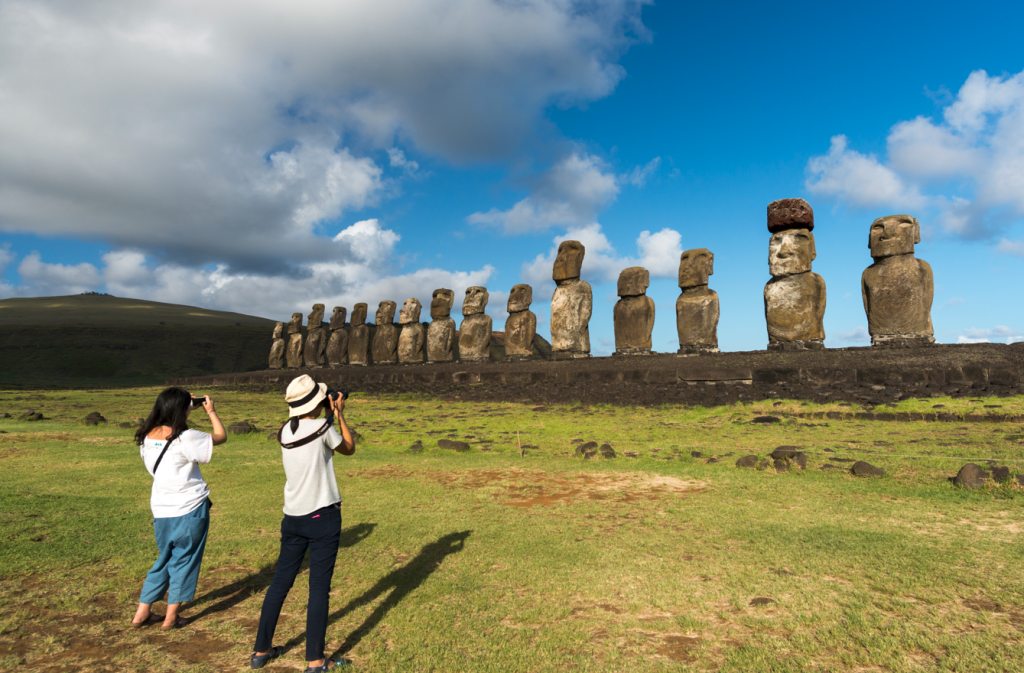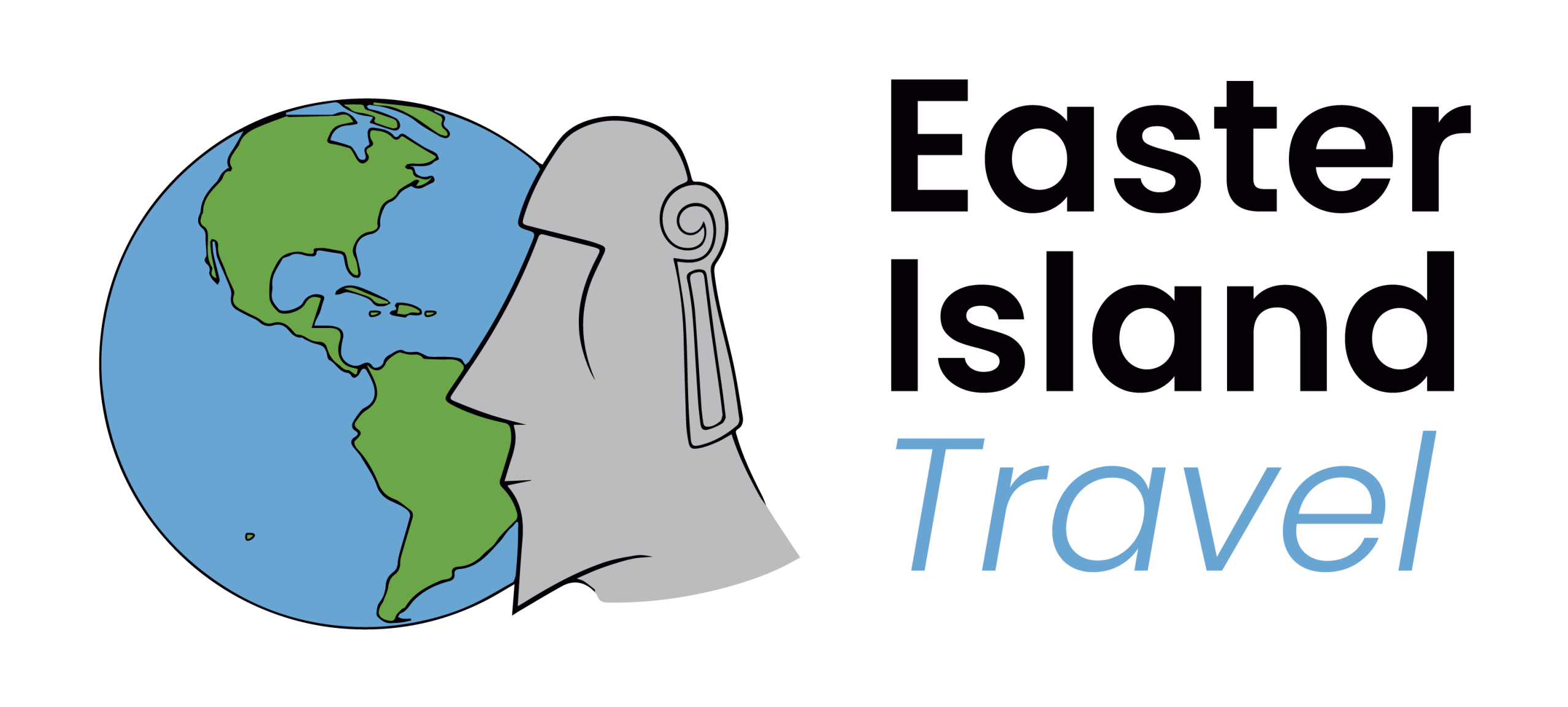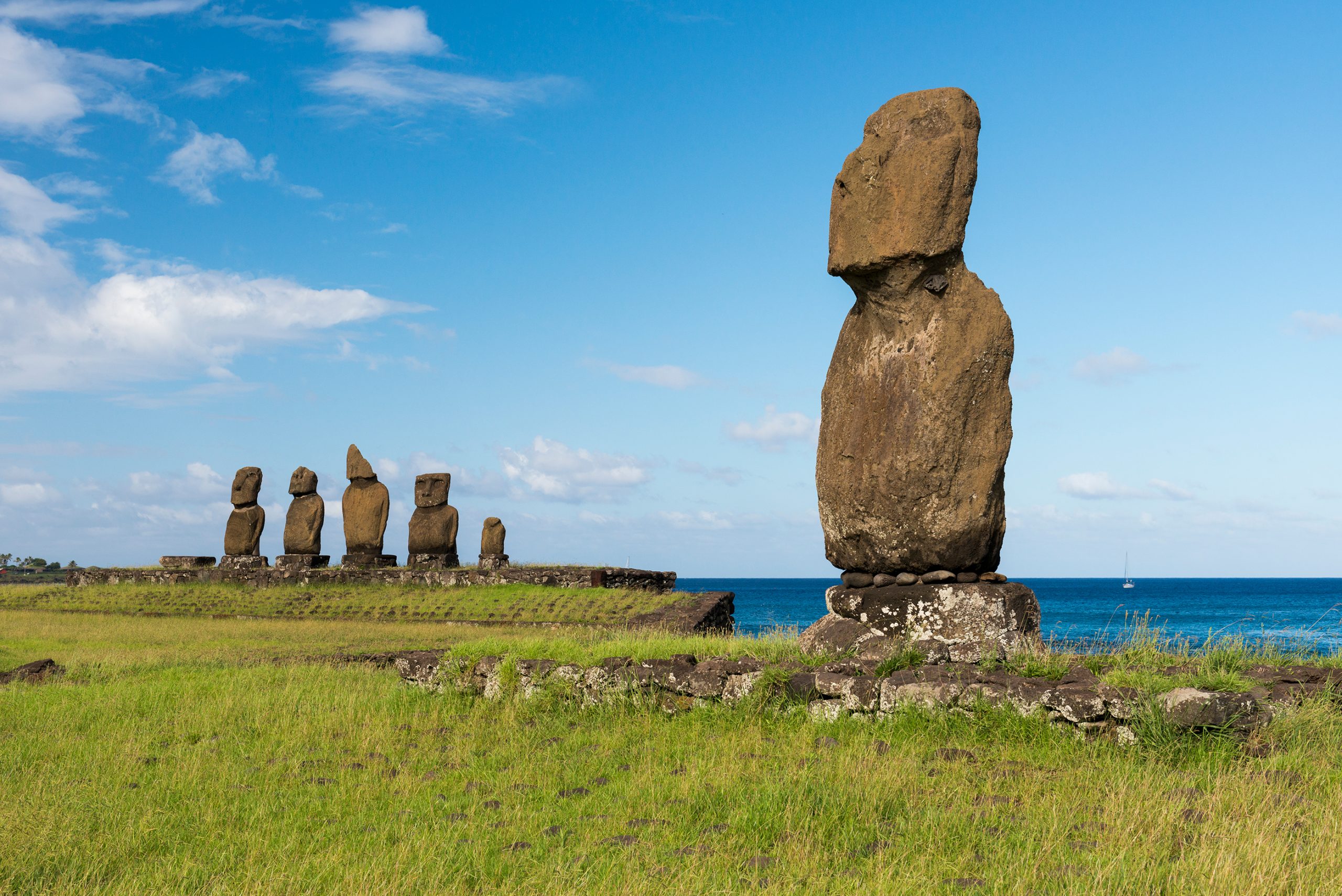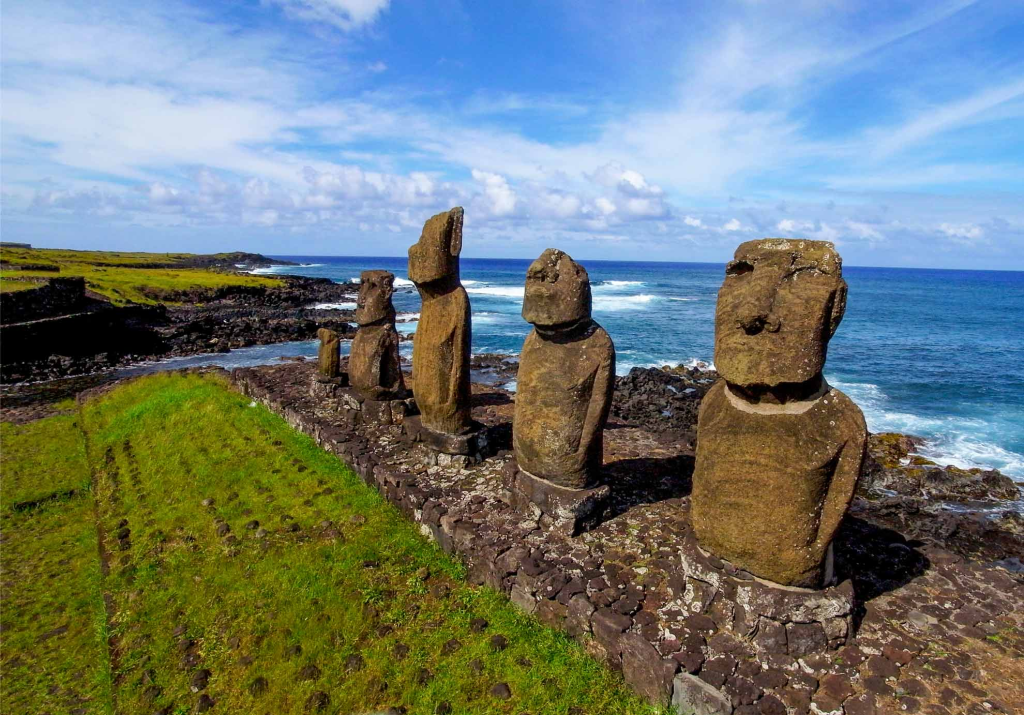
If you’re planning a trip to Rapa Nui, there’s one place you simply can’t miss: the Tahai Archaeological Complex. Not only is it one of the most accessible sites from downtown Hanga Roa, but it also holds centuries of history, mystery, and an unforgettable view of the ocean—especially as the sun begins to set.
At Easter Island Travel, we’ve guided hundreds of travelers through this place. And even after so many visits, we still find details that surprise us. Today, we want to share with you why Tahai is far more than just a photo opportunity or postcard—it’s a living testimony of the past.
What is the Tahai Archaeological Complex?
Tahai consists of three ceremonial platforms, known as ahu, each reflecting a different moment and style in Rapa Nui’s history. These are:
- Ahu Ko Te Riku
- Ahu Tahai
- Ahu Vai Uri
Each has its own unique features and has been carefully restored, allowing us to admire them today as they once stood centuries ago—facing the ocean in quiet strength.
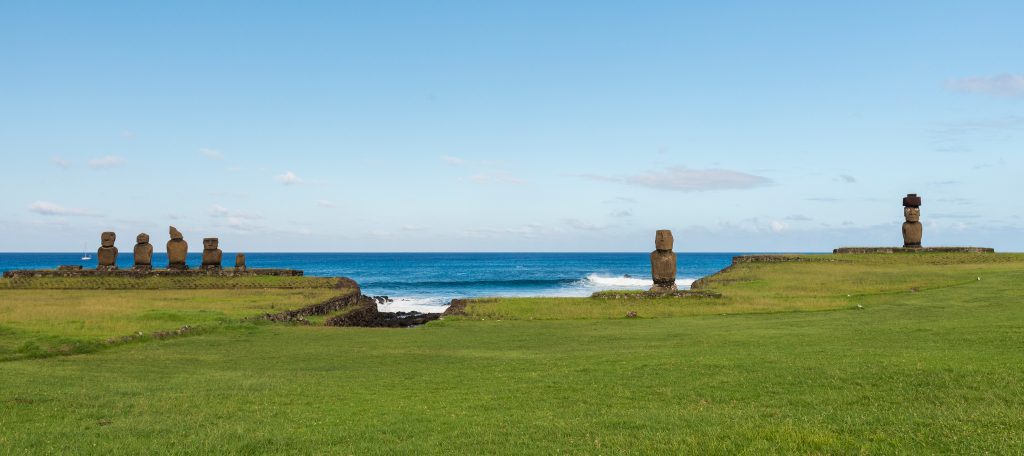
Ko Te Riku: The Moai That Sees
The most striking feature of Ko Te Riku is its moai with white coral eyes and a pukao—the large red topknot made from volcanic scoria. This moai is unique on Rapa Nui because it represents how ancestors would have looked when “alive,” a concept known locally as Aringa Ora o te Tupuna.
It’s important to note that the eyes and pukao are not original but were added in modern times to help us better imagine how the moai once appeared. Still, their symbolic and educational value is immense.
As local guides, we often see how this moai leaves a lasting impression on visitors. With its eyes in place, it almost feels like it’s watching you—like the spirit of the ancestor still speaks through stone.
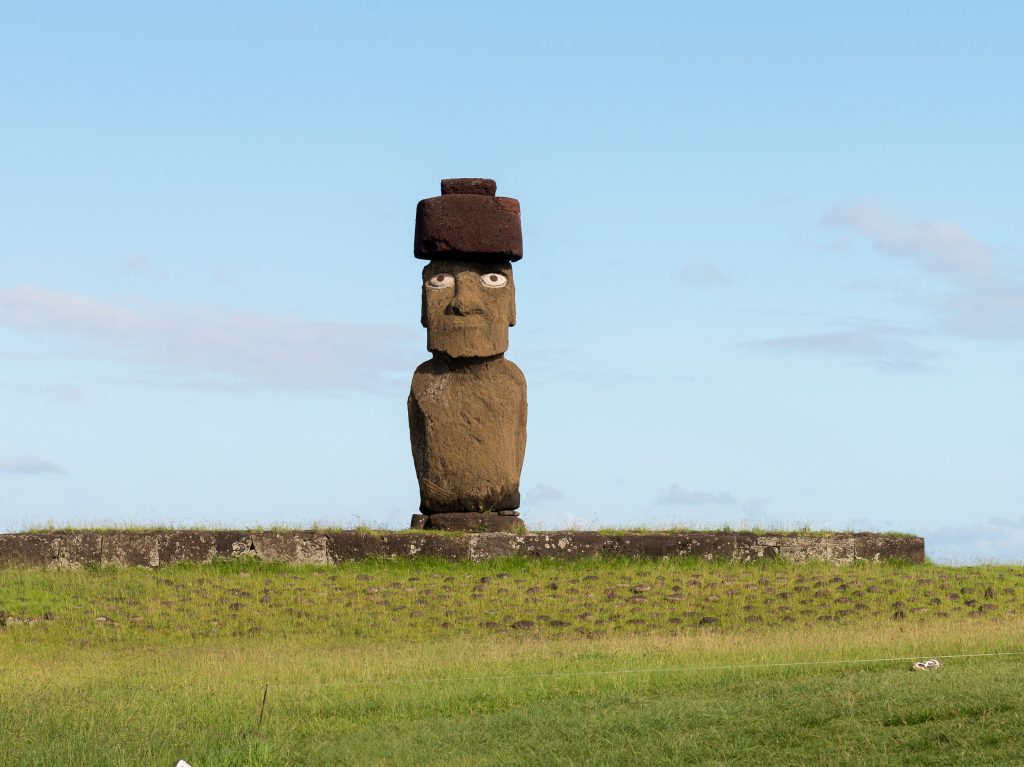
Ahu Vai Uri: Moai Rescued from Oblivion
The second platform is Ahu Vai Uri, meaning “dark water” in the Rapa Nui language. It’s a powerful example of how archaeology can bring buried history back to life.
Before restoration, the moai here were completely covered in earth, with one partially submerged on the northern side. Thanks to excavations led by archaeologist William “Bill” Mulloy, several moai were unearthed and carefully repositioned.
Today, you can see them standing once more, facing inland as if still watching over their people. This platform reminds us of Rapa Nui’s resilience—even after centuries underground, its stories continue to rise.

Ahu Tahai: The Heart of the Site
The central platform, Ahu Tahai, gives the entire complex its name. Although its moai lacks eyes or a pukao, it radiates a quiet strength. When we bring groups here, many fall silent, simply gazing out to sea.
At Tahai, words feel unnecessary. The moment speaks for itself.
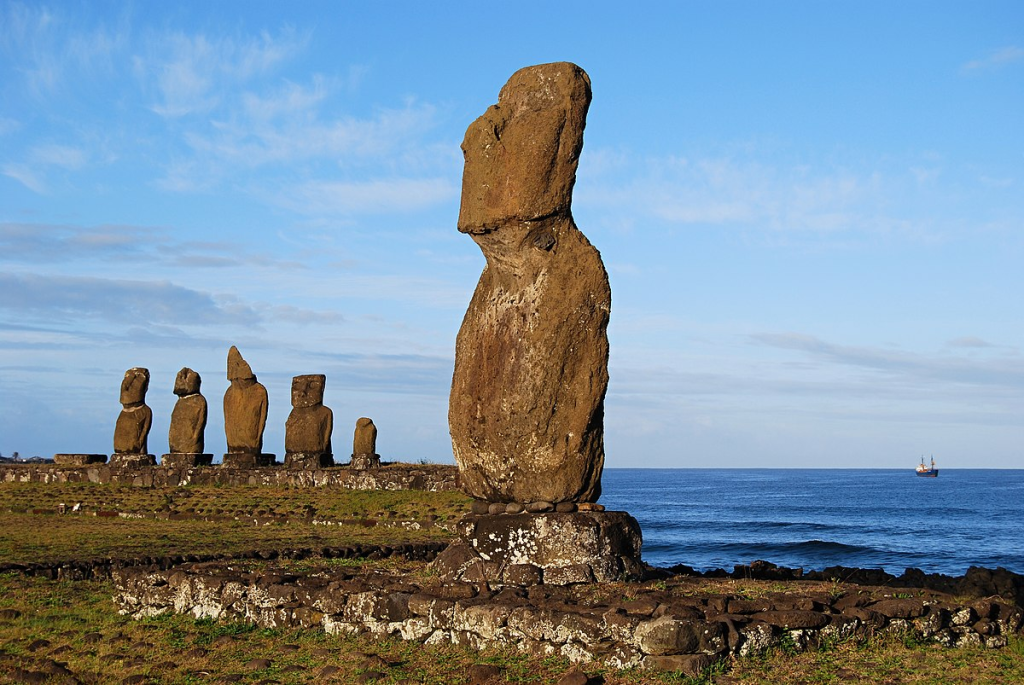
A Sunset to Remember
What makes Tahai one of the most visited sites on the island is its incredible sunset view. Facing the ocean, the site offers a perfect vantage point as the sun slowly disappears behind the moai.
The interplay of light and shadow creates a stunning scene: moai silhouettes outlined against a fiery sky, while the sea catches the last golden rays. For many travelers, this becomes one of the most moving memories of their visit.
At Easter Island Travel, we always recommend coming here around sunset. Whether you visit on your own or with one of our guides, this is a visual gift you won’t want to miss.

The Restoration of Bill Mulloy: A Legacy of Gratitude
Everything we experience at Tahai today is thanks in large part to the work of American archaeologist William “Bill” Mulloy, who led the site’s restoration in the late 1960s.
Crucially, Mulloy didn’t work alone. He collaborated closely with the Rapa Nui community, respecting their traditions and knowledge. His approach was groundbreaking for its time, emphasizing local involvement in preserving their own heritage.
As a gesture of gratitude, a memorial was built in his honor beside the site, overlooking the ahu he helped bring back to life.

Practical Tips for Your Visit to Tahai
- How to get there: You can walk from central Hanga Roa in about 15–20 minutes. The route is easy, with dirt paths and grassy areas.
- Best time to visit: While you can go any time of day, sunset is ideal. Arrive at least 30 minutes before to enjoy the shifting light.
- Is a ticket required? Yes. Tahai is part of Rapa Nui National Park, so you’ll need to present your park pass (valid for 10 days).
- What rules should I follow? Remember, this is a sacred and protected site. Always follow the National Park’s rules: stay on marked trails, respect all signage, and never consume alcohol or disturb the surroundings. Share the space peacefully and honor the spirit of the place.
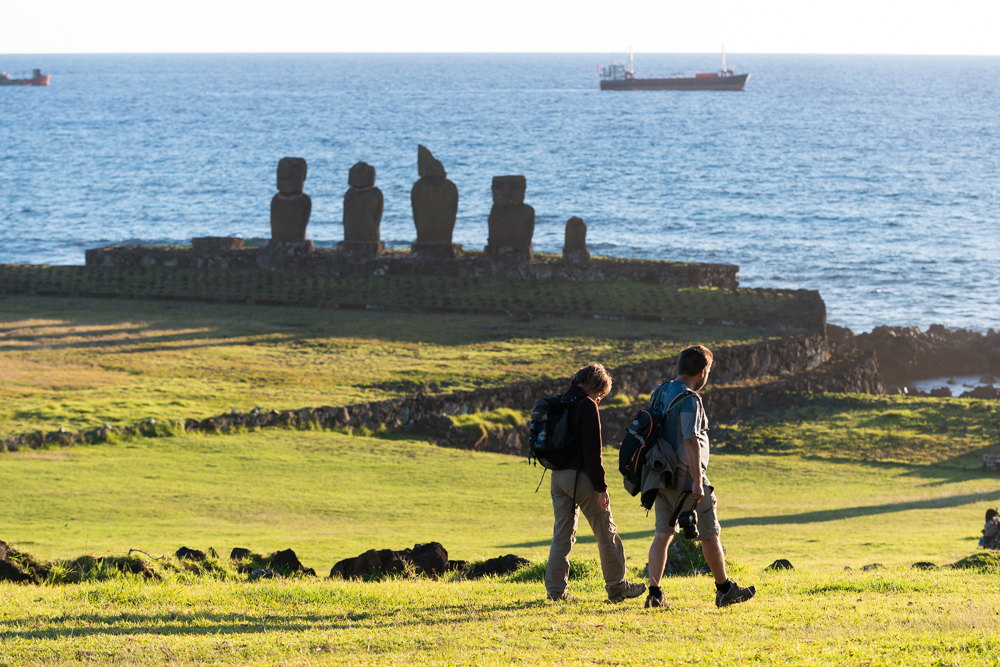
Conclusion: Tahai, an Essential Stop on Your Journey
Tahai is more than an archaeological site. It’s where past and present meet—by the sea, under open skies, and with the ancestors’ presence still alive. Its beauty, history, and energy make it one of the most meaningful places to visit on Rapa Nui.
At Easter Island Travel, we invite you to experience it with us. We’ll show you not only what’s visible—but also the deeper connections that many overlook: the bond between land, history, and culture.
